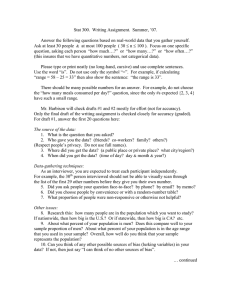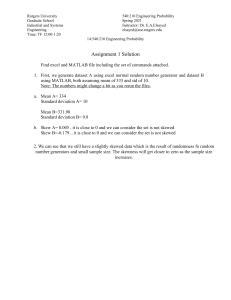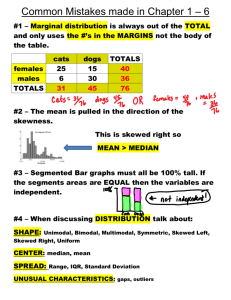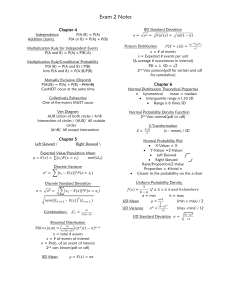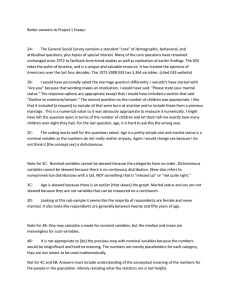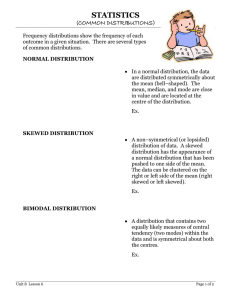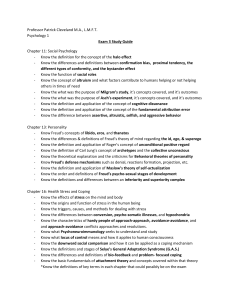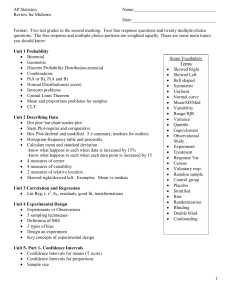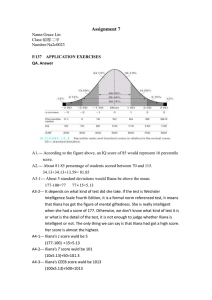intro review
advertisement
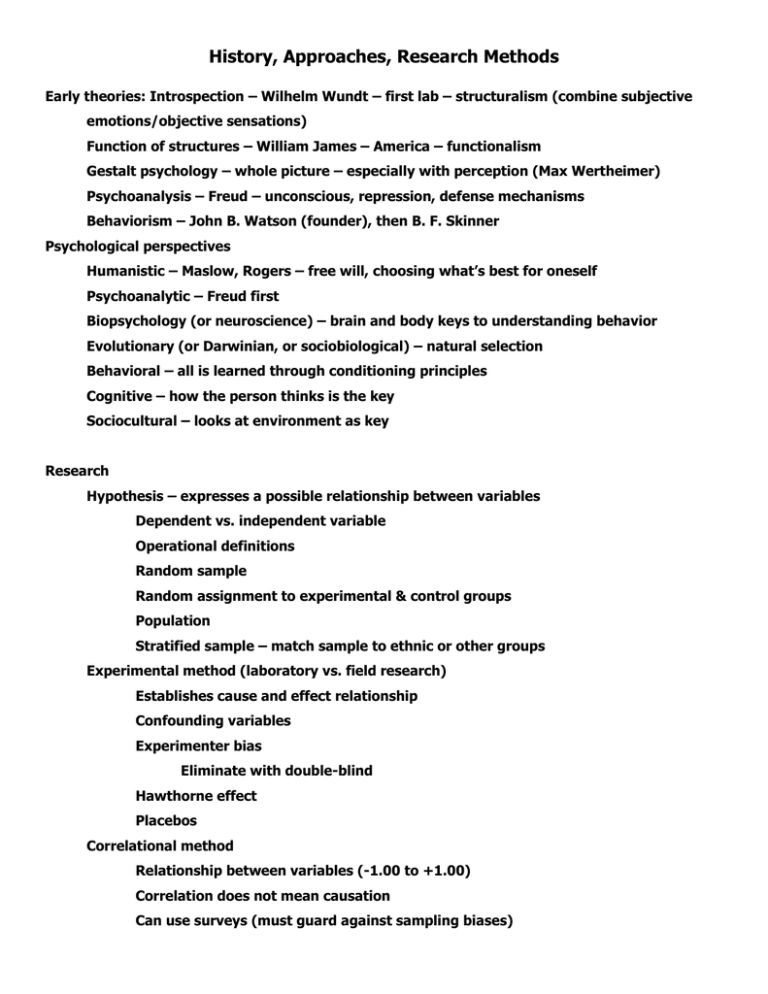
History, Approaches, Research Methods Early theories: Introspection – Wilhelm Wundt – first lab – structuralism (combine subjective emotions/objective sensations) Function of structures – William James – America – functionalism Gestalt psychology – whole picture – especially with perception (Max Wertheimer) Psychoanalysis – Freud – unconscious, repression, defense mechanisms Behaviorism – John B. Watson (founder), then B. F. Skinner Psychological perspectives Humanistic – Maslow, Rogers – free will, choosing what’s best for oneself Psychoanalytic – Freud first Biopsychology (or neuroscience) – brain and body keys to understanding behavior Evolutionary (or Darwinian, or sociobiological) – natural selection Behavioral – all is learned through conditioning principles Cognitive – how the person thinks is the key Sociocultural – looks at environment as key Research Hypothesis – expresses a possible relationship between variables Dependent vs. independent variable Operational definitions Random sample Random assignment to experimental & control groups Population Stratified sample – match sample to ethnic or other groups Experimental method (laboratory vs. field research) Establishes cause and effect relationship Confounding variables Experimenter bias Eliminate with double-blind Hawthorne effect Placebos Correlational method Relationship between variables (-1.00 to +1.00) Correlation does not mean causation Can use surveys (must guard against sampling biases) Naturalistic observation – unobtrusive, realistic Observer bias, error Case study – full and detailed, but only one subject or small group of subjects Ex. Ramachandran’s research in Man Who Mistook His Wife for a Hat Difficult to generalize Statistics Descriptive statistics Measures of central tendency – mean, median mode Extreme scores – outliers – skewed distributions Extreme high scores – positively skewed Measures of variability Range – distance between highest & lowest Variance = standard deviation squared Standard deviation – you know you love this Z-scores Normal curve – 68-95-99.7 Percentiles Correlation coefficient (scatterplot) Inferential statistics Can the data be applied to a larger population? Are there sampling errors? Calculate the p value (probability that the results occurred by chance) P<.05, considered statistically significant Ethical guidelines Institutional Review Board (IRB) Animal research Have clear scientific purpose Care for and house animals in humane way. Acquire animals legally. Minimize suffering. Human research Informed consent No coercion Confidentiality/anonymity Minimum risk to subject (no way Milgram’s research would be approved) Debriefing of subjects
